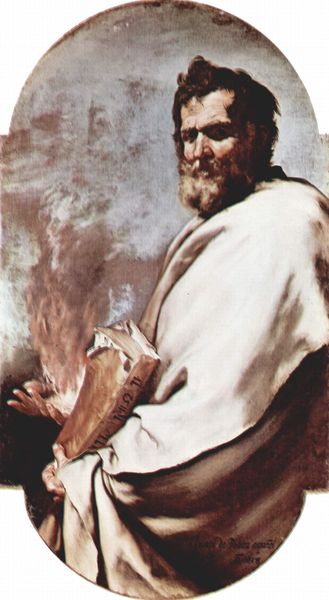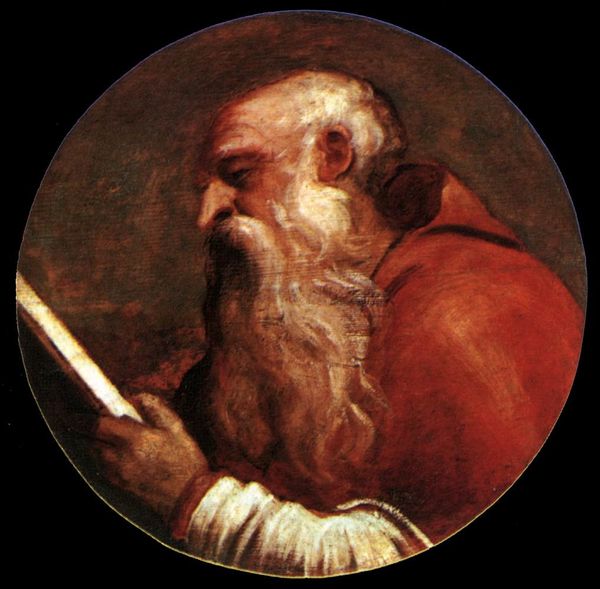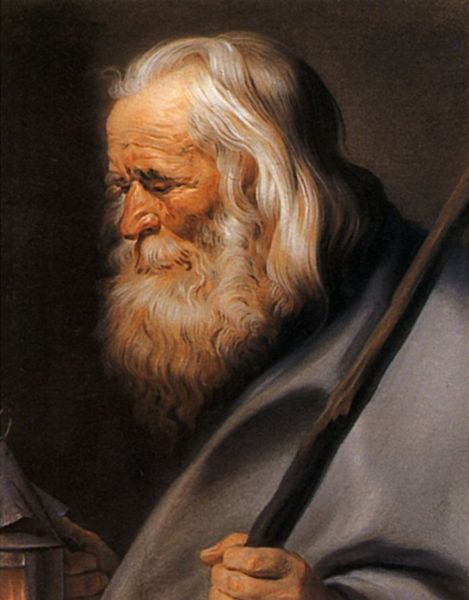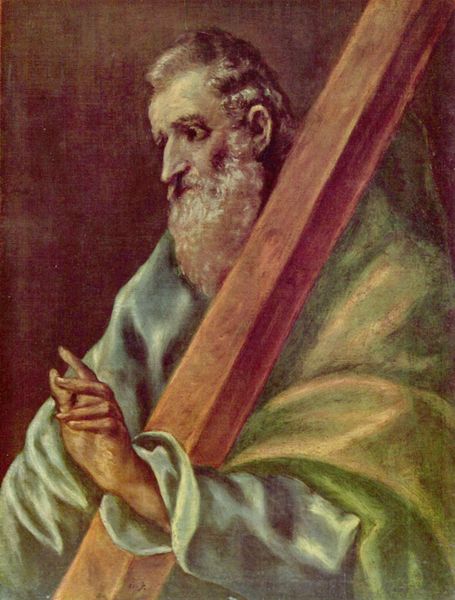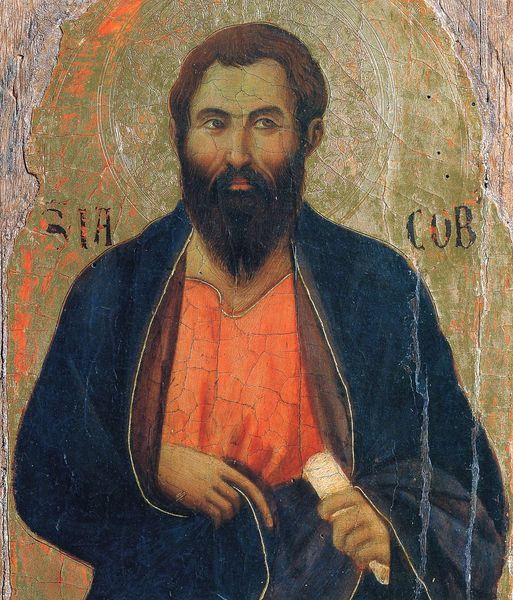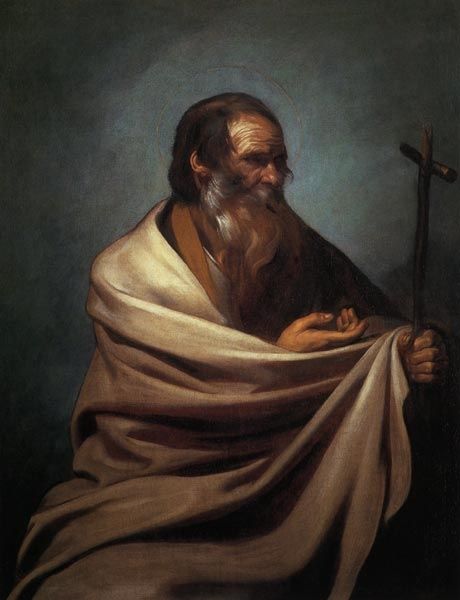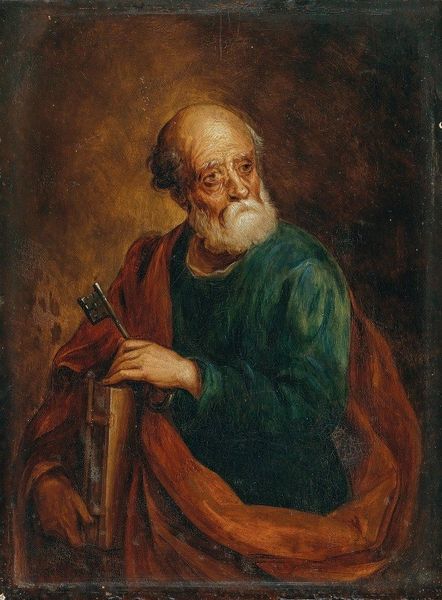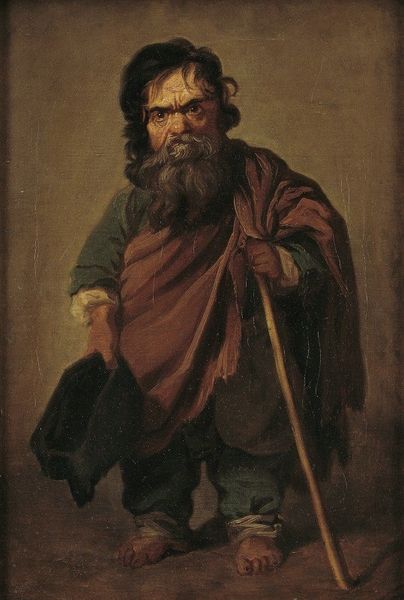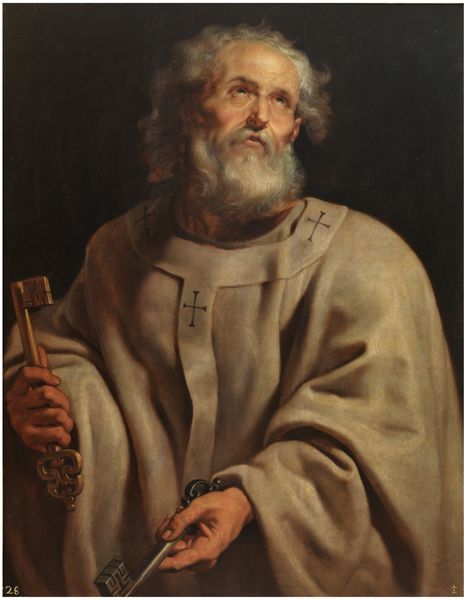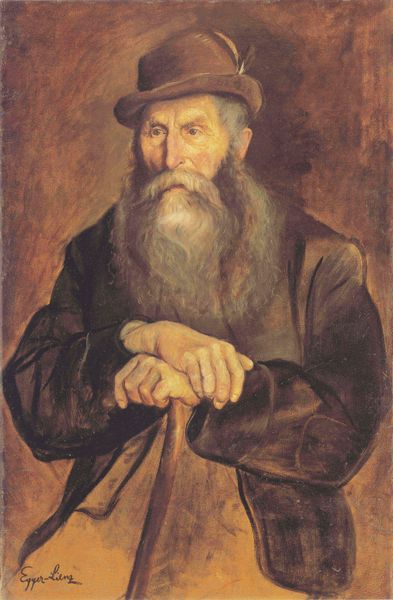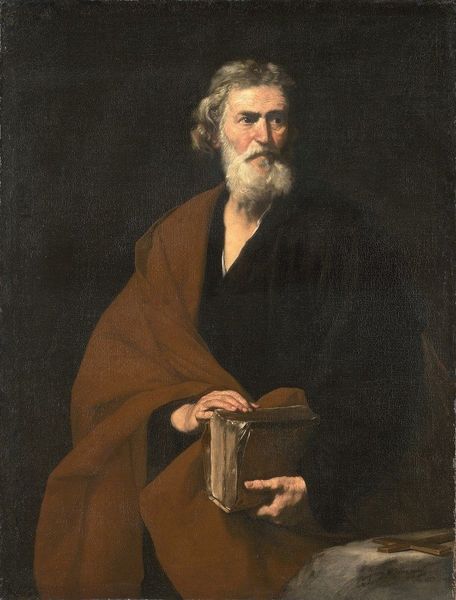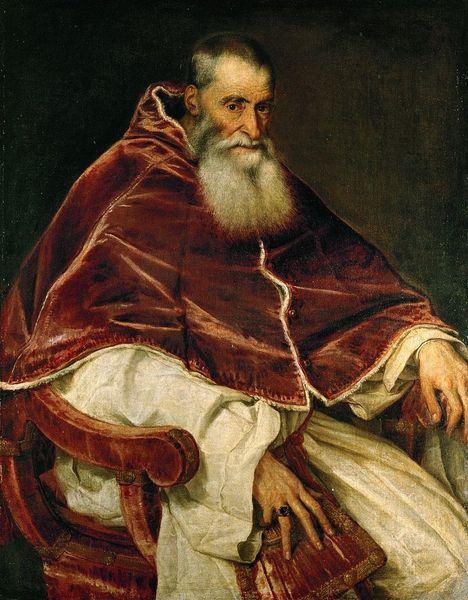
painting, oil-paint
#
portrait
#
painting
#
oil-paint
#
oil painting
#
history-painting
#
academic-art
#
italian-renaissance
#
realism
Copyright: Public domain
Curator: What a striking portrait. Jose Ferraz de Almeida Junior created this oil painting, "Apóstolo São Paulo," in 1869. Editor: My immediate reaction is that the artist is focused on texture and materiality. Look at the rendering of the beard—the coarseness of the individual strands, contrasted against the drape of the cloth. It’s incredibly tactile. Curator: It is a wonderfully detailed study. Almeida Junior paints Paul, an apostle central to Christianity, as both a figure of strength and pensive contemplation. His gaze looks off into the distance and you can really interpret his sword as a representation of his will, but it also can bring into conversation how it informs contemporary religious identity. Editor: Absolutely, and notice how he utilizes the oil paint to create a depth that mimics flesh. You can see the weight and labor embedded within the artist's production. How do you think the historical context influenced the making and meaning of this work? Curator: Well, Brazil at that time was going through modernization and looking back at a idealized Europe for inspiration, which explains the work’s academic style. In many ways this piece seeks to portray Saint Paul as this steadfast foundation during times of dramatic upheaval. The realism movement that came out of that era had major class implications to how the artist interpreted people within that social landscape. Editor: The background too seems significant – that classicized temple is more than scenery, it's a crafted signifier of a specific cultural heritage. What did the construction of that image mean during that specific historical time? Curator: Yes, the subtle backdrop is important because Almeida Junior includes hints of his history within an imagined historical European, as both being pillars during this era of nation building. Editor: This portrait reveals so much about both the subject and the conditions of its making. I will be thinking a lot about how artistic labour informs visual and cultural meanings that are crafted throughout time! Curator: Yes, reflecting on identity, faith, and material representation can provoke thoughtful reflection in ways that bring past realities in conversation with contemporary notions and concepts, it is quite brilliant indeed.
Comments
No comments
Be the first to comment and join the conversation on the ultimate creative platform.
